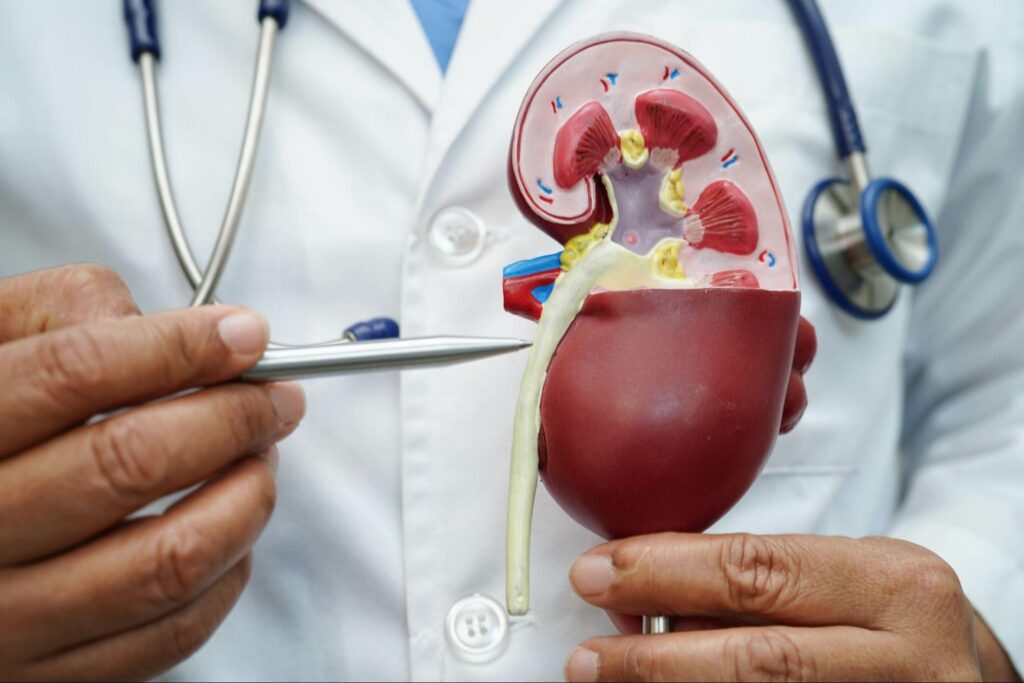If you’ve recently been diagnosed with testicular cancer, you are probably experiencing a wide range of emotions and asking a lot of questions. According to the Testicular Cancer Society, testicular cancer is rare in the grand scheme of things. But it is the most common type of cancer in males between the ages of 15 and 35. Because April is Testicular Cancer Awareness Month, we are going to try and cover some of the questions you may have.
1. Health Factors May Have Increased Your Risk
If you’ve been given a testicular cancer diagnosis, you might be wondering what caused it. While there is no known direct cause for testicular cancer, you may have been at a higher risk due to health factors. Keeping in mind that there is no clear cause of testicular cancer, the following factors may have put you in a higher risk group:
- Having an undescended testicle (also called cryptorchidism)
- HIV infection
- Family History
- Having a father or brother with testicular cancer
- An inherited disease called Klinefelter’s syndrome
- Personal history of cancer in the other testicle
- Age
- The American Cancer Society reports that half of the testicular cancers occur in men between 20 and 34 years old.
- Ethnicity and race
- White men are at a 4 to 5 times greater risk of developing testicular cancer than black and Asian-American Men. The risk level for American Indians falls between that of white men and Asian-American men.
2. You Can Expect More Testing After a Testicular Cancer Diagnosis
Once you have been diagnosed with testicular cancer, you will need to undergo further testing. The tests will help determine the type and stage of cancer you have. Your doctor will also need to check to see if the cancer has spread beyond the testicle. You may need to undergo the following imaging tests after you are diagnosed:
- Ultrasound
- Chest x-ray
- Computed tomography (CT) scan
- Magnetic resonance imaging (MRI) scan
- Positron emission tomography (PET) scan
- Bone scan
3. There are Different Types of Testicular Cancer
There are many types of cells in the testicles. Each type of cell can develop into cancer. Knowing which type of cancer is present is important when determining the right treatment.
- Germ cell tumors: Germ cells are the cells in the testicles that make sperm. According to the American Cancer Society, over 90% of testicular cancers start in germ cells.
- Carcinoma in situ (CIS) of the testicle: Also called intratubular germ cell neoplasia. Germ cell cancers can start as testicular CIS, which is a non-invasive form of the disease. It is difficult to find CIS before it develops into invasive cancer because it is usually asymptomatic.
- Stromal tumors: These are tumors that start in the stroma, which are the hormone-producing tissues of the testicles.
- Secondary testicular cancers: Whenever cancer starts in one place and metastasizes (spreads) to the testicles, it is not considered true testicular cancer. Cancers are named and treated based on where they started.
4. The Earlier The Diagnosis, The Better
As with most illnesses (and especially cancers), early detection is extremely beneficial when it comes to treating testicular cancer. The prognosis is also usually better when it is caught in the early stages. The stage is determined after a testicular cancer diagnosis is made so the doctor can determine if it has spread. You can get more details on how testicular cancer is staged from the National Cancer Institute.
5. It Is Highly Treatable
Testicular cancer is highly treatable. How aggressive the treatment is will depend on the stage of cancer and if it has spread. The type of cancer and the tumor size may also come into play when developing a treatment plan with your healthcare team. As noted by the National Cancer Institute, there are new types of treatment being developed and tested in clinical trials. But for now, there are five standard treatments used to treat testicular cancer:
- Surveillance (watchful waiting and recurrent testing)
- Surgery to remove the testicle and parts of the lymph nodes
- Radiation therapy
- Internal or external
- Chemotherapy
- High-dose chemotherapy with stem cell transplant
With treatment, the risk of death caused by testicular cancer is small. According to the Testicular Cancer Society, if it’s found and treated early, testicular cancer is up to 99% curable. But as mentioned before, the prognosis is best when the disease is caught early.
—
Alliance Urology Specialists is home to an expert team of urologists that are committed to providing comprehensive care to adults with urologic disorders as well as testicular issues. We combine years of experience with the latest in diagnostic and treatment options. If you have concerns about your urologic or testicular health, call our office at (336) 274-1114 to make an appointment.

